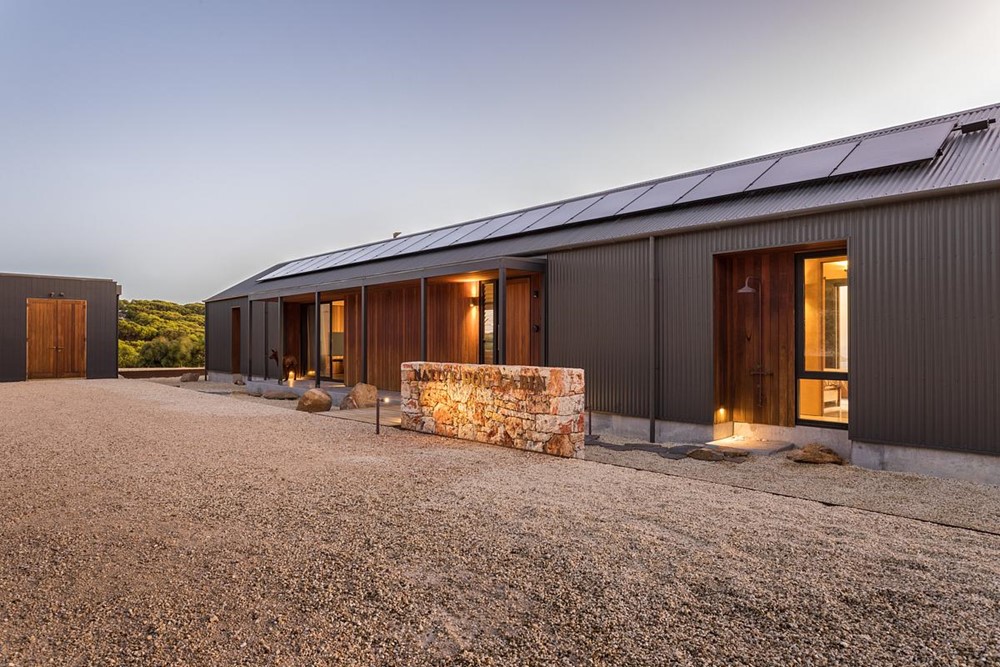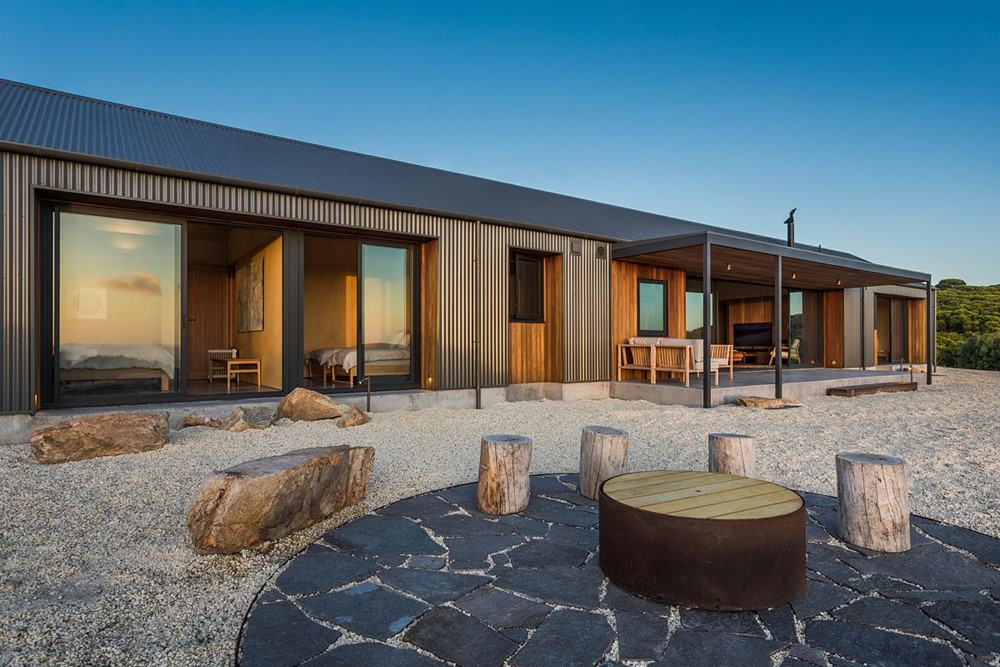Native Dog Cabin is a project designed by Chindarsi Architects. The site sits on a spur of land jutting out into the Southern Ocean between Bremer Bay and Dillon Bay. Enjoying ocean views to the east, south and west, it is surrounded by beaches and wild places. The peninsula was subdivided into large acreage lots in the early 1990’s and sold for residential development with restrictions on land clearing only to within small building envelopes to preserve the coastal landscape. Undeveloped, the site was purchased by the current owners some thirty years later. Photography by Photographica.








The landscape is wild and has a muscular, visceral quality. The home needed to maximise the view and its connection within the monumental landscape setting. This logically resulted in a long-house plan where each and every room gets a view out towards Dillon Bay.
Using an approach often seen in early farms and settlements, small simple buildings are grouped together with additional buildings added organically over time. The starting point was a simple gable form for the accommodation, a separate flat-roofed pavilion for the carport and storage, and a large water tank. Corrugated steel forms both walls and roofs and provides a singular reading of the primitive cabin form, with Colorbond Woodland Grey chosen to visually recede within the bushland setting.
The form and materiality of the home references the former Bremer Bay Telegraph Station (George Temple-Poole, 1896) the make-shift fishing shacks built around Dillon Bay and the simple utilitarian farm sheds nearby. Large sliding doors and an oversized verandah frame the expansive view, and rhythmic verandah posts lend a formality and weight to the entry-sequence, conjuring memories of the Telegraph Station.
A three-bedroom, two-bathroom home, the home needed to be very low maintenance and have a minimal garden. A raised concrete podium allows the home to be defined as separate from the surrounding landscape and deters snakes. A Zen-like gravel and rock garden is traversed by a light-weight timber bridge.
Concrete, corrugated steel, timber and stone reference the vernacular context of Bremer Bay:
• Concrete defines a platform for living within the greater natural landscape anchoring the home and providing thermal massing to moderate temperatures;
• steel corrugated cladding provides a weatherproof carapace protecting the soft interior from the harsh elements;
• timber claddings and internal lining are a combination of waxed birch plywood and bushfire resistant Blackbutt timber referencing the coastal landscape setting both in colour and texture and giving the home it’s cabin-like feel; and
• local Spongelite salvaged from a previous renovation of the Telegraph Station is re-purposed to mark the entry/threshold, grounding the home in the colonial history of the area. Other stone sourced from nearby Boxwood Hill and beyond is used as stepping stones, paving, seats and sculptural elements.
Taking a passive, self-sufficient approach to services and sustainability, the house features an over-sized water tank for fire-fighting and general water use, solar PV cells (with the house making more energy than it uses), electric hot water system, on-site grey and black water processing, on-site composting and an EV charging point.



